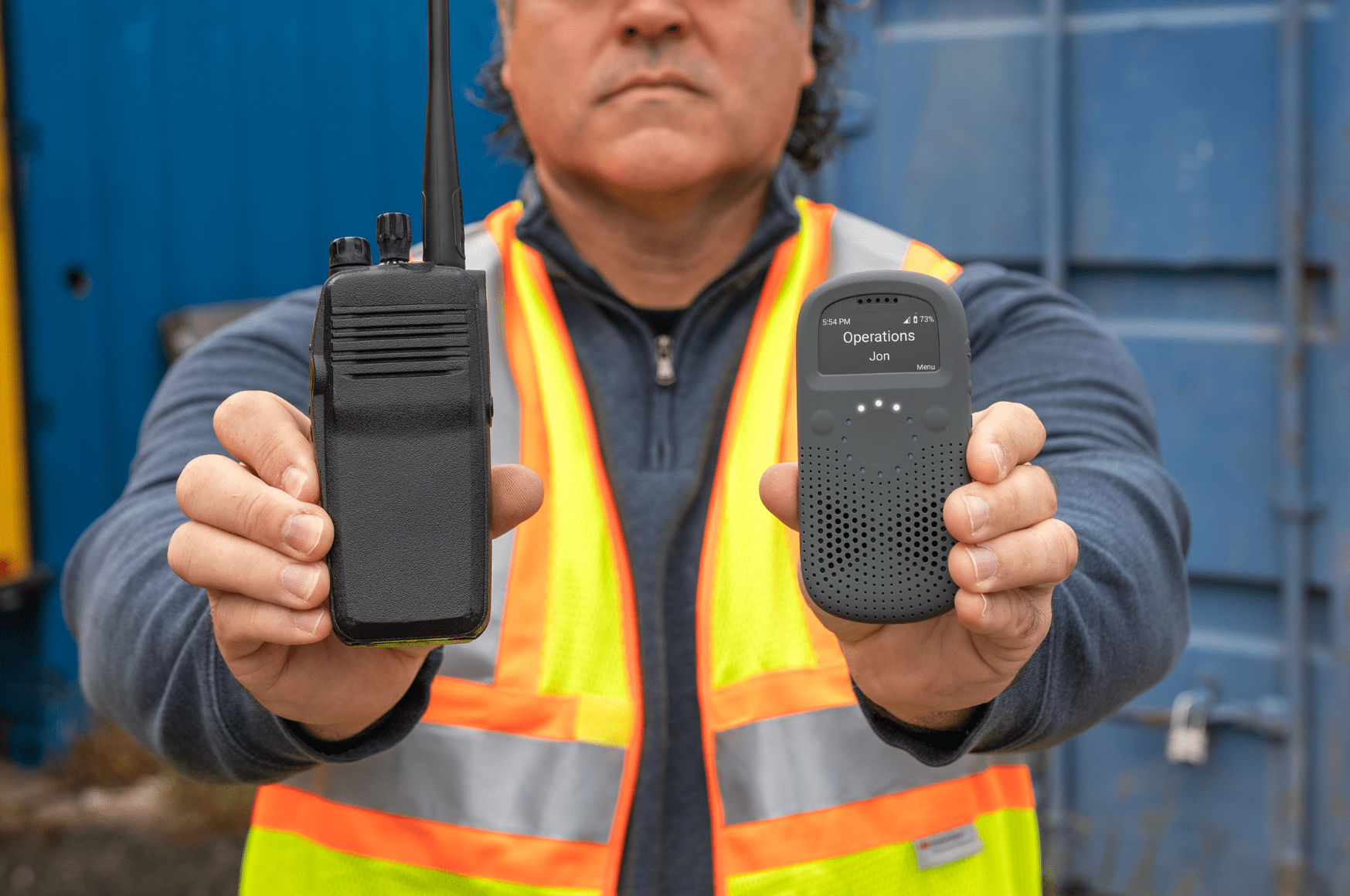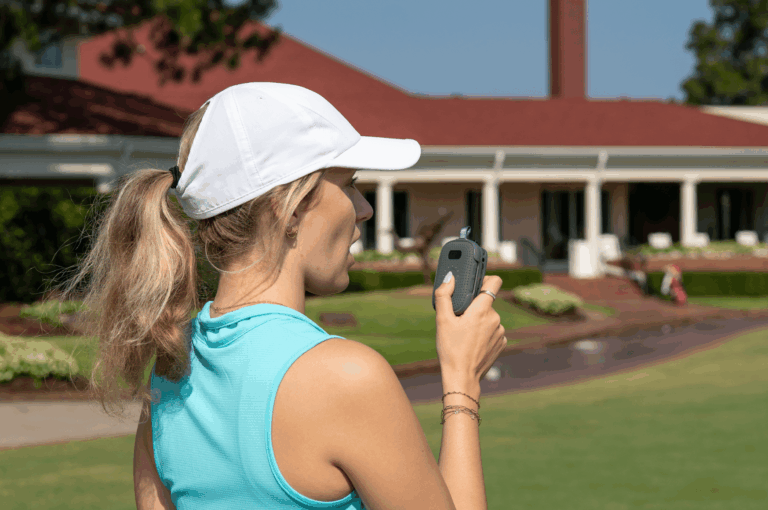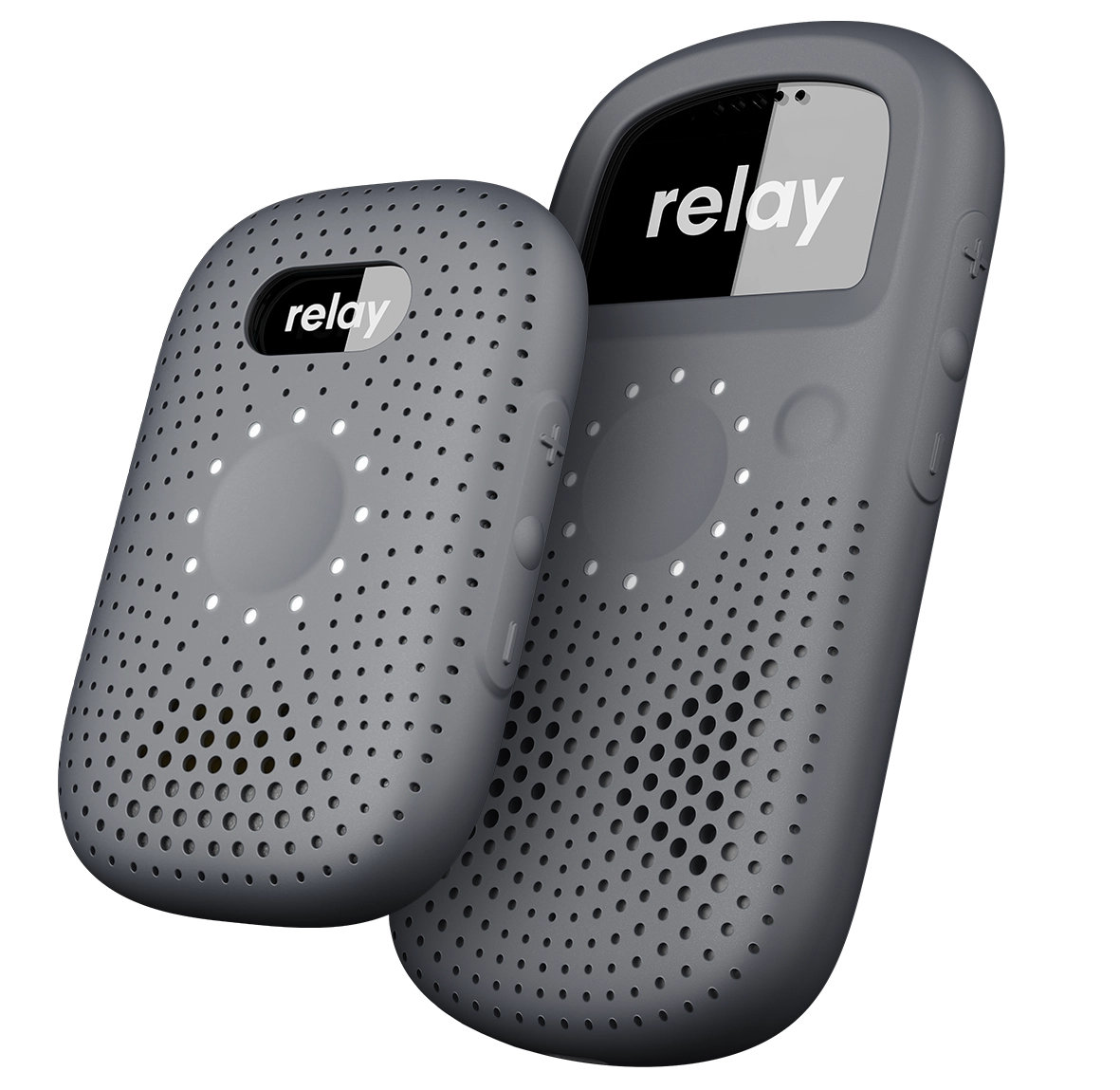Walkie-talkies took the world by storm back in the 1930s when they were first invented – revolutionizing business communication and forging connections across distances. But, as the landscape (both literally and figuratively) has changed, so has standard walkie-talkie range.
While effective with a clear line of sight, the distances you can communicate with a walkie-talkie vary when obstacles occur – from the terrain and the use of nearby electronics, to wall thicknesses and even the weather.
In business, walkie-talkie range is one of the biggest talking points. Today, companies need fast, clear communications to ensure safety and productivity on their premises. So, how do you achieve good signal, and which two-way radio do you choose?
In this article, we’ll explain walkie-talkie ranges, how two-way radio coverage works, obstacles that can reduce signal, and how to increase the effectiveness of your walkie-talkie and find the best two-way radio for you.

What is the Typical Range of a Walkie-Talkie?
The typical range of a walkie-talkie is between 2-5 kilometers (1-3 miles). Long-range walkie-talkies operate across distances up to 15 kilometers (around 9 miles). Radios that operate on cellular or Wi-Fi have a nationwide range (meaning they provide national coverage).
What is the Maximum Range a Walkie-Talkie Can Achieve?
Technically, a walkie-talkie can reach a nationwide range at a maximum (distances of 1000+ miles/kilometers). Yet this is only possible with a walkie-talkie that operates on Wi-Fi or cellular networks. These are often referred to as two-way radios or smart radios, rather than walkie-talkies.
Traditional walkie-talkie ranges (that operate via antenna and radio frequencies) vary. A vehicle walkie-talkie claims to have the longest range, up to 48 kilometers (or 30 miles). GMRS and Ham radios also claim to have longer ranges, yet these require a license to operate.
However, it’s important to remember that frequency radios can experience interference which can reduce distances – potentially quite significantly.
What Types of Environments Reduce Walkie-Talkie Range?
The best environment is a flat, open area, like a desert or a field, as this allows the radio to communicate further. Areas with obstructions, like mountains, buildings, or people, can experience poorer signals.
The natural environments that can reduce walkie-talkie range include:
- Hilly or mountainous areas: Hills can block signal and reduce range
- Forests or jungles: Trees and dense shrubbery can absorb and scatter radio waves, thus reducing range
- Rainy, snowy, or foggy weather: Can interfere with signal strength, reduce range, and cause static
- Extremely humid conditions: High humidity can absorb and scatter radio waves, similar to the effects of rainy weather
- Inside buildings with many internal walls: Concrete and steel inside buildings can block and reflect waves, reducing range
- Areas surrounded by obstruction: Any large objects, like shelving units in a warehouse or vehicles in a parking lot, can reduce range
Business environments that can struggle with walkie-talkie signal and experience poor range include:
- Airports: Operating walkie-talkies across buildings or in an area surrounded by planes or vehicles can obstruct signal strength
- Warehouses: Boxes and shelving units can interfere with range
- Manufacturing buildings/factories: Machinery, steel, and concrete walls can affect signal and decrease range
- Hotels: Large premises and heavily partitioned buildings can struggle with signal strength and range
- Construction sites: Sites with obstructions and frequently used electronics can cause line of sight or electromagnetic interference
- Large venues at full capacity: Signal strength can be weakened when large groups of people are gathered close to walkie-talkies
How Can I Increase the Range of My Walkie-Talkies?
Try the below to increase the range of a walkie-talkie:
- Change channels/frequency: Switch the channels or frequency of the radio to see if any provide a clearer or longer range in your area
- Obtain a clearer line of sight: Operate the walkie-talkie in an open area without any obstructions, or obtain higher ground in a populated area (like at the top of a hill or building)
- Fully charge the battery: Low walkie-talkie battery life can disrupt the range and signal, so make sure the device is fully charged
- Create distance between power lines or electronics: Use a walkie-talkie away from any potential electromagnetic interference
- Obtain a repeater: Install a walkie-talkie repeater with an antenna in the location, ensuring the repeater is compatible with your walkie-talkie and you have the right licenses to operate it
- Wait for better weather: Trying to operate a walkie-talkie when is raining, snowing, foggy, or during a storm may cause static
- Switch to cellular: Use a two-way radio that operates on 3G/4G/5G or Wi-Fi to increase radio communication range and remove all interference (learn more about Relay radios with nationwide range)
How Do Different Walkie-Talkie Frequencies Affect Range?
When purchasing a walkie-talkie, you’ll usually find the following in their specification: the frequency they operate on (UHF or VHF) and the radio service they use (typically FRS, MURS, GMRS, or Wi-Fi/Cellular).
The frequency and radio service impact walkie-talkie range, and which environment it performs best. This only applies to walkie-talkies that operate only on frequencies, not radios that work on LTE, 3G/4G/5G, or Wi-Fi (like Relay).
Types of frequencies:
The most common frequencies found in walkie-talkies are VHF (Very High Frequency) and UHF (Ultra-High Frequency):
- VHF: Has a frequency range between 30-300 MHz and operates on a longer range compared to UHF. However, it struggles to penetrate through buildings and works better in open areas.
- UHF: Has a frequency range between 300 MHz to 3GHz, but has a shorter range compared to VHF. It works well in urban areas and can penetrate through walls, buildings, and other obstacles.
Types of radio services:
The main types of radio services you can access with a portable radio are FRS, MURS, GMRS, and LTE/Wi-Fi:
- FRS (Family Radio Service): Is a publicly available frequency, accessible without a license. These types of walkie-talkies come in short and long ranges. FRS is authorized for 22 channels in the 462-467 MHz range and operates best in urban areas.
- MURS (Multi-Use Radio Service): Doesn’t require a license and uses 5 channels within the frequency range of 151-154 MHz. It operates across short and long distances, but generally performs better in rural areas rather than in urban areas.
- GMRS (General Mobile Radio Service): Is available via a license and can cater to short and long distances. It utilizes channels around 462-467 MHz, but has additional channels compared to FRS, plus repeater channels, which enable extended ranges.
- LTE/Wi-Fi: Typically requires a subscription (see Relay pricing) and offers nationwide range. It combines Wi-Fi with all major U.S. cellular networks (switching automatically to find the best coverage) and offers superior audio quality and reliable communication.
How Does Line-of-Sight Affect Walkie-Talkie Range?
Walkie-talkies are designed to perform best when there is a clear line of sight. This means if two people are holding a walkie-talkie, they should be able to see each other to gain clear, strong, and long-range communication.
Anything that interferes with the line of sight reduces how far you can communicate with a walkie-talkie. For example, if there is a person, building, hill, or even fog in between you, it can decrease range.
What are the Best Long-Range Walkie-Talkies?
The best walkie-talkie for you depends on your location and your primary use of the device. Read our guide on how to choose the best walkie talkie for your business.
When choosing a two-way radio for business use, it’s important to consider:
- Whether you need long or short-range communication
- The obstructions on the business premises
- How critical indoor and outdoor communications are (including emergency communication)
- FCC regulations and licenses required
- Any additional features you need in a communications device (e.g., man-down alarms, location tracking, and live language translation)
Using Relay for business
Alongside enabling fast, clear communication between employees – even those in different buildings nationwide – Relay radios are designed to improve productivity in the workplace, with features including:
- Group communication and push-to-talk
- Reliable, nationwide range
- Live translation of 30+ languages (to remove language barriers and improve communication between employees)
- Make phone calls between devices
- GPS and Bluetooth to locate people and things
- A built-in panic button, enabling employees to discreetly call for help in an emergency or dangerous situation
- A Relay App, enabling management to use Relay features and communicate with employees, without having a device themselves
Learn more about Relay at your own pace in our on-demand video demo center.

FAQs
Can Walkie-Talkies Work Through Walls or Obstacles?
Yes, walkie-talkies can work through walls or obstacles, but how well depends on the device, frequency, and radio service. Usually, the fewer obstructions and walls around you, the better the range.
Some devices operate better through walls than others (like FRS radios), while others have no issue communicating with obstacles around them (like Relay devices that work on LTE/Wi-Fi).
How Do I Troubleshoot Poor Walkie-Talkie Range?
If your walkie-talkie isn’t communicating very far or has static/fuzzy signal, try the following to stop radio interference:
- Switching channels
- Pointing the antenna vertically
- Extending the antenna to its full length
- Charging the battery
- Moving away from electronics
- Obtaining a clearer line of sight between the two devices
- Waiting for better weather
How Do I Test the Range of My Walkie-Talkies?
The best test of range for a walkie-talkie is to simply have one person holding one device and another person holding the other, and continue moving away from each other to see when the signal gets fuzzy.
It’s important to remember that manufacturers may test range with a clear line of sight (unless stated otherwise). Therefore, anything around or between you and the other person can change the expected range.
Upgrade to Relay Radios For Reliable, Extended Range
Designed for businesses big and small, Relay radios operate with nationwide signals to deliver superior audio quality for your employees – no matter where they are.
With an all-in-one communications solution that combines the most essential features for frontline teams, Relay can unlock your productivity and streamline business communication. Ready to upgrade your business radios? Book a demo or see our pricing plans today!







